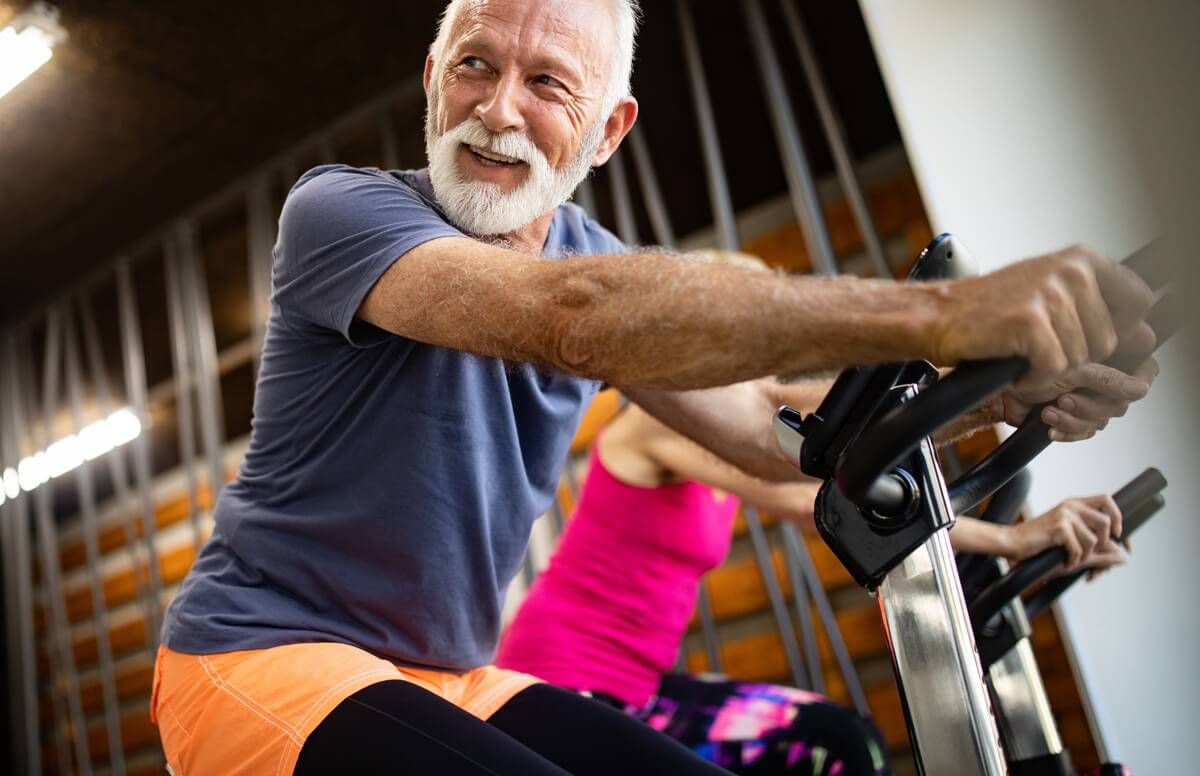How to Do High-Intensity Interval Training
Here's why it's beneficial and some sample workouts to get started
If physical fitness is on your radar at all, you’ve likely heard of high-intensity interval training -- HIIT, for short. This popular workout format has become a mainstay in gyms and fitness studios over the past several years for good reason: The benefits are numerous, and well-documented in the scientific literature.

What is a HIIT Workout?
There are many different formats that HIIT can take, but at its core, it is simply a workout that alternates between short bouts of very intense exercise and equally short (or even shorter) rest periods.
One of the original HIIT formats was popularized by Japanese exercise physiologist Izumi Tabata, who published a paper in 1996 detailing the favorable physiological effects of a workout that alternated 20 seconds of high-intensity exercise with 10 seconds of rest for eight cycles. Eventually, the paper caught the attention of mainstream fitness media, and this “4-minute workout” introduced the HIIT method to the world.
Virtually any exhausting activity you can do safely and pain-free is perfect for HIIT.
Today, you’ll still find workouts bearing Tabata’s name offered at fitness centers across the globe, but many other types of HIIT workouts have sprouted up, too. Some are sport-specific, incorporating activities or movements designed to improve athletic performance; others have simply altered the timing of the work/rest intervals either to meet different physiological goals, or so they can be applied to exercisers across various fitness levels.
What Are the Benefits of HIIT?
The reason HIIT remains so popular is because it works. A wide body of research has shown that regular HIIT workouts improve aerobic function, boost muscle growth, burn fat at a higher rate, moderate the markers of type-2 diabetes, and even improve cognitive function as well as, or better than traditional workouts. And, since the point of HIIT is to go all out, it does all of this in about half the time of a normal workout. A typical HIIT session takes just 15 to 30 minutes, including the warm-up and cool-down.
Another great feature is the range of exercises available. Virtually any exhausting activity you can do safely and pain-free is perfect for HIIT. You can customize a HIIT workout to include your favorite high-intensity exercises or those specific to a sport or activity you love. Runners and cyclists can do sprint intervals or hill repeats (running or cycling up a hill repeatedly) to improve speed and power; tennis players can do shuttle drills to improve agility and lateral reach; kettlebell enthusiasts can use swings or snatches to achieve an aerobic and strength benefit in one short workout.
Not only can you customize the exercises and duration of your intervals, but intensity is also relative to each person. So, for those who are less fit, walking at a very brisk pace or doing a handful of knee push-ups will suffice. More fit individuals may need to sprint or do burpees (squat thrusts) to reach peak intensity. In other words, HIIT workouts are entirely customizable, and usually little or no equipment is needed.
Is High-Intensity Interval Training Safe for Older Adults?
Many studies on HIIT exercise have focused exclusively on middle-aged and older populations, with findings almost universally positive. However, because of the nature of HIIT workouts, an added level of caution should be taken for older adults. Here’s a list of mandatory safety precautions:
- Don’t attempt a HIIT workout if you aren’t fit and healthy enough to exercise at moderately high to high intensities.
- Always warm up! Skipping this puts you at risk for injury.
- Never perform exercises you aren’t familiar with. Learn proper form and practice the exercises at lower intensities/slower speeds before ramping up the intensity.
- Avoid high-impact exercises if you have joint or other bone-related issues.
For those who aren’t yet fit enough for a traditional HIIT workout, simply be patient and work your way up to it. Start with shorter work and longer rest intervals, and select activities and effort levels that are challenging but not too intense. While HIIT’s benefits are greatest as you approach maximum effort, you should never feel dizzy, nauseous or short of breath during or after any workout.
Sample HIIT Workouts
Beginner Bodyweight: 30-second work/60-second rest intervals (30/60), with the work interval at 75% effort; two sets of each exercise.
Warm up with five to 10 minutes of moderate aerobic activity that moves all your joints through a full range of motion. Next, perform two sets of three or four bodyweight exercises for 30 seconds at a moderate to high intensity, resting for 60 seconds between each set. Finally, cool down with some slow walking and a quick total body stretch.
Example exercises might include: climbing/descending stairs; jumping jacks; push-ups; squat jumps or squat-to-overhead-reaches; burpees; inchworms (walk hands out into plank position, then reverse-walk hands back to toes); lunges.
Traditional Tabata: 20/10 with work interval at max effort; two to 12 minutes total.
Warm up! Then perform two to 12 minutes of intervals, alternating vigorous exercise for 20 seconds with just 10 seconds of rest. For aerobic activity, do the same activity each set (sprint or shuttle drill, for example). For calisthenics or kettlebells, you can do a few sets of three or four different exercises to mix it up. Cool down at the end.
Exercise examples: Maximum-effort sprints (such as running, cycling, swimming); short, steep hill repeats (or work against high resistance on an elliptical machine, stationary bike or rower); shuttle drills; whole body calisthenics (see Beginner Bodyweight, above, for examples); kettlebell swings or snatches (heaviest safe weight).
Peak Performers: 60/30 with work intervals at 90% effort; 10 to 20 minutes.
This is for the masters athletes out there. Start by warming up for at least five minutes. Then, perform longer work intervals of 60 seconds at a high but not maximum intensity, resting for just 30 seconds after each. Do six to 14 sets for a total of 10 to 20 minutes. Cool down.
Exercise examples: Running strides; longer hill climbs on a bike; 100 meter repeats in a pool; aqua running in the deep end of a pool (tread water during the rest); kettlebell swings or snatches with a moderately heavy weight.


